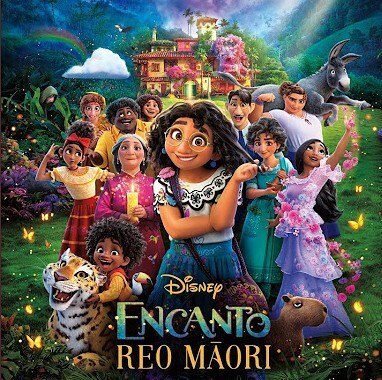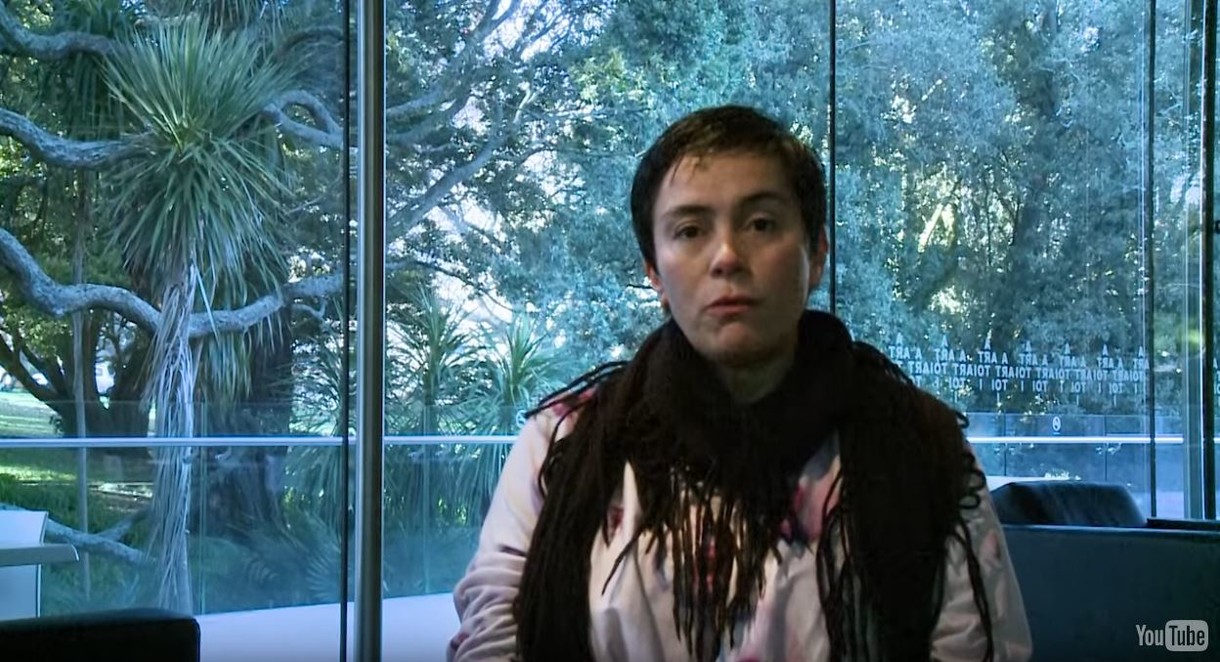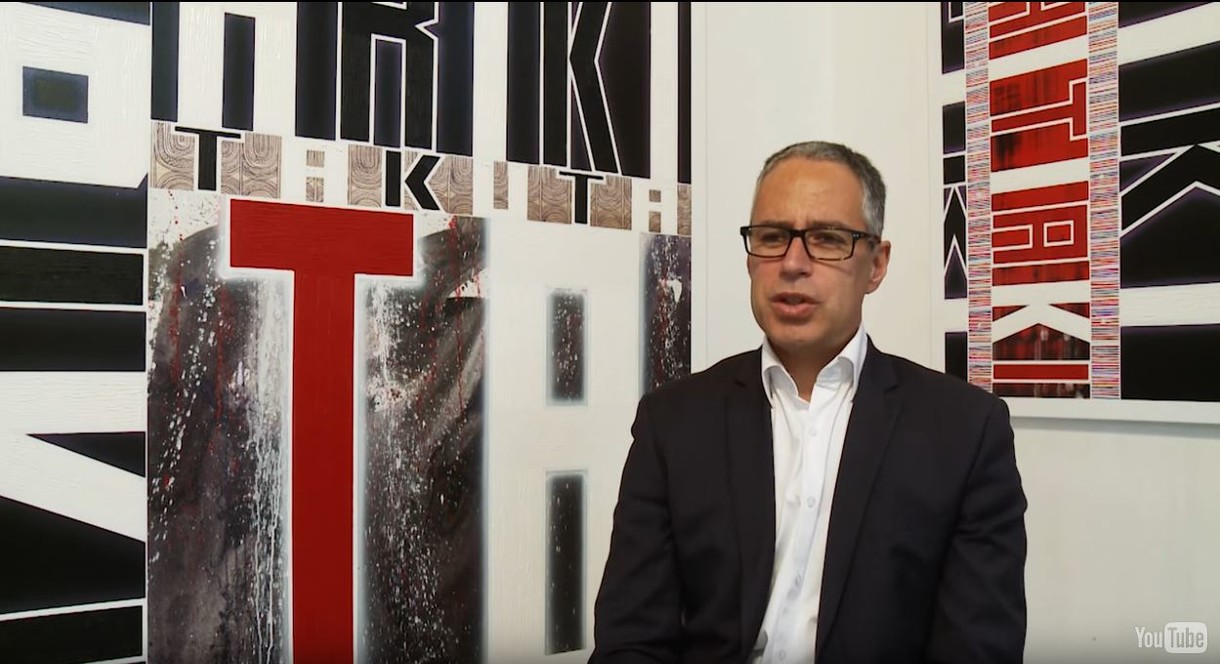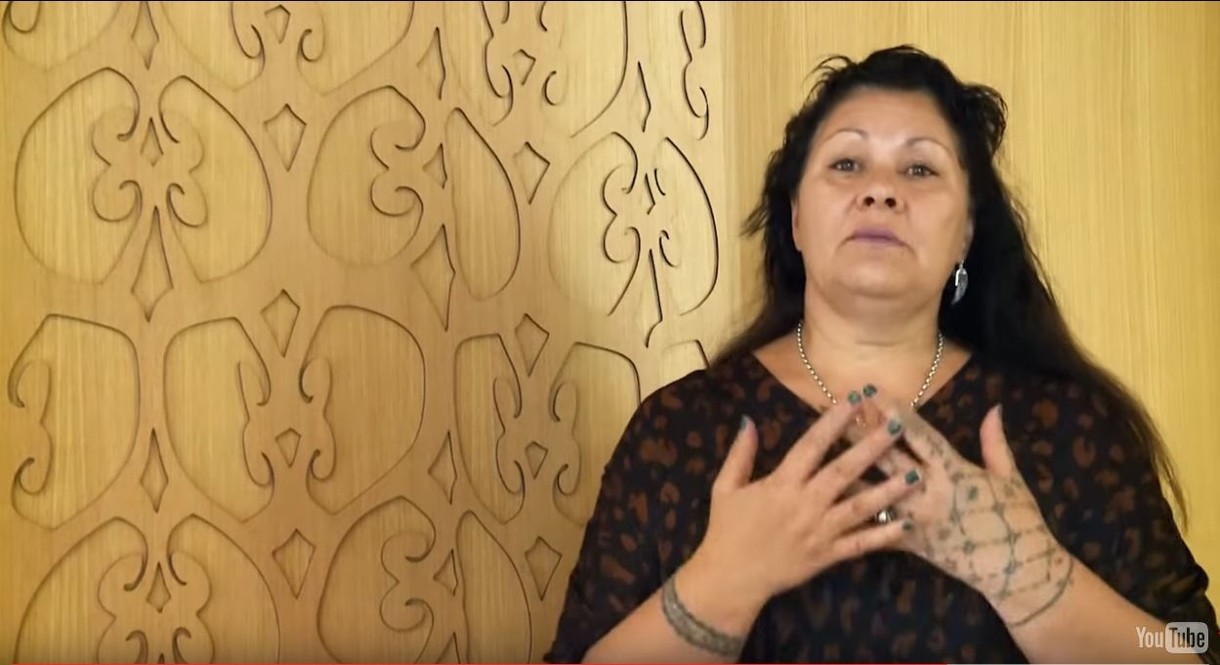Rachael Rakena speaks on the use of Te Reo in her work.
Rachael Rakena speaks on the use of Te Reo in her work.
For Te Wiki o Te Reo Māori / Māori Language Week 2015, Te Puna o Waiwhetū Christchurch Art Gallery invited five Māori artists to talk about the use of te reo in their work.
Related reading: Te Reo
Collection
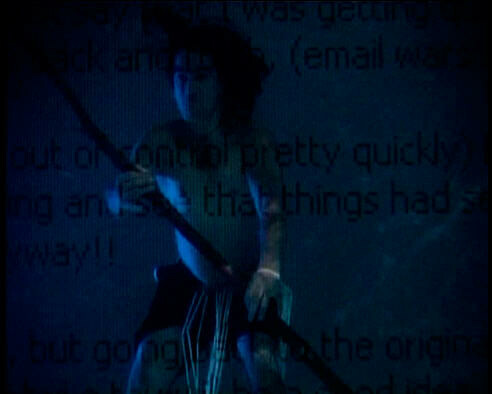
Rachael Rakena Rerehiko
This work was displayed 25 November 2017 – 11 March 2018 with this label:
He uri whakaheke nā Tahu Pōtiki, he kaitoi hoki a Rachael Rakena e mahi ana ki kā rauemi hou. I te hurika o te mano tau kua hipa, i kitea e Rakena te hurika haere o te ao me tā tātou nei mau ki tēnei mea te karere hiko, arā, te īmera. “He pāka ōku ki te Kāi Tahu Whānau [he tira ki Ōtepoti e tautoko ana i kā kaupapa Kāi Tahu, ā-reo nei, ā ahurea hoki] waihoki i te tuku tārua mātou ki a mātou anō i kā īmera, heoi, ko te whaika matua, ko te whakamahi i te reo. I te Rerehiko, i ahu mai kā puoro i kā īmera. Kua whāi wāhi te hapori Kāi Tahu ki kā mahi nei, ā i rumakina rātou e kā kupu o kā īmera kua tukuna ki a rātou anō. I tapaina te whakatakoto atarua nei e Rakena ki te ikoa Rerehiko, ki te timotimo whakaaro, he pēhea rā te ariā o te ipuraki ki te Māori. Ka kawea e Rerehiko tāna kaimātaki ki ngā wai hōhonu, ki ōnā rētōka – me he ko Arihi kē e ruku iho ana i te rua rāpeti , ka raua atu ki tētahi ao tūroa nei te rite, ā ka kitea he tū whakapapa, he tū honoka I kā nekehaka, i kā kupu, i kā puoro hoki, nā ka puta he kōrero me ōnā ake kura e huna ana. Ka neke ētahi, kua iria, kua rukua; nā te takaroa, nō ao kē pea. Mōhio rāia tātou o Aotearoa ki tā rātou tū, tā rātou mau i te taiaha, me te tuku i kā rika hei waiata. Ka whai wā hoki ki te whakaata, ki te wānaka, i tāu kiteka i kā tinana e rite nei ki te tiki, he tinana takata te āhua kua hakāia ki te pounamu. E tuitui haere ana i waeka i kā āhua, ko kā rereka kupu mai i kā īmera. I te puoro, ka rokona e tātou ētahi wāhanga kua pānuitia-ā-waha nei, e haka ana i tētahi kōrero paki i kā pikika maniore, hekeka hoki. I te otika, ka āta ahu mai tētahi āhua mai i uta ki tai, e tono mai ana ki matapaki ai te ao hou nei.
Rachael Rakena is an artist of Kāi Tahu (the main Māori iwi or tribe in southern Aotearoa New Zealand) descent working in new media. In the late 1990s and early 2000s, Rakena was witnessing a changing landscape with the widespread adoption of email. “I was part of Kāi Tahu Whānau ki āraiteuru [a Dunedin-based collective supporting Kāi Tahu culture and language] and our community was cc’ing each other in messages, and we were trying to use as much te reo as we could […]. In Rerehiko, the soundtrack comes from the emails. The Kāi Tahu Whānau community performed in the work and swam in amongst the email text that they had sent themselves.” Rakena made the video installation Rerehiko (which means electronic and plays on the word rorohiko, or computer) to consider how the internet effected change for Māori. Rerehiko takes the viewer to deep, dark, watery depths – and like Alice down the rabbit hole we are cast into a large and immersive cinematic space where abstract layered elements – movement, words, sound and editing – provide the narrative from which we grasp at meaning. Figures move, suspended and submerged; time-lag makes them seem otherworldly. Their haka, taiaha and waiata actions are familiar to us in Aotearoa New Zealand. There are also moments of quiet reflection as bodies are seen in the pose of hei tiki, the human figure traditionally rendered in pounamu. Weaving among the figures are streams of text from emails. In the audio track we hear fragments of them read aloud, creating a kind of narrative arc as tension builds and dissipates. Finally, as the figures emerge from the sea to sight land, we are invited to contemplate the world anew.
Nathan Pohio (Ngāti Wheke, Ngāi Tūāhuriri), curator
Notes
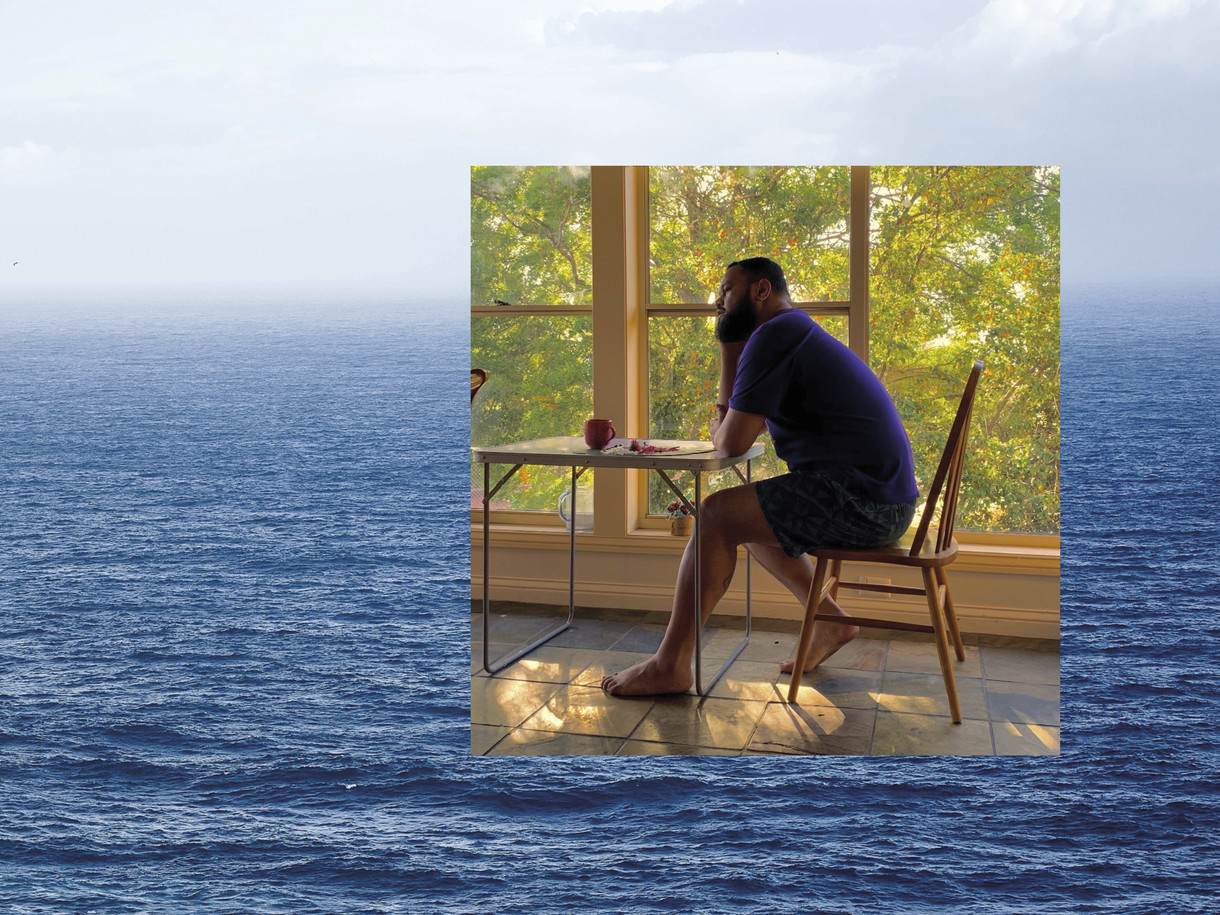
Te Wheke: Pathways Across Oceania
Welcome – nau mai haere mai. Kei Te Ararau o Tangaroa / Pathways Across Oceania is an attempt to understand the Gallery’s collection from the perspective of our place in Te Moana-nui-a-Kiwa, the Pacific Ocean. Full of stories of migration, connection and belonging, this huge new exhibition reflects the connections and tensions that shape our past, present and future.
